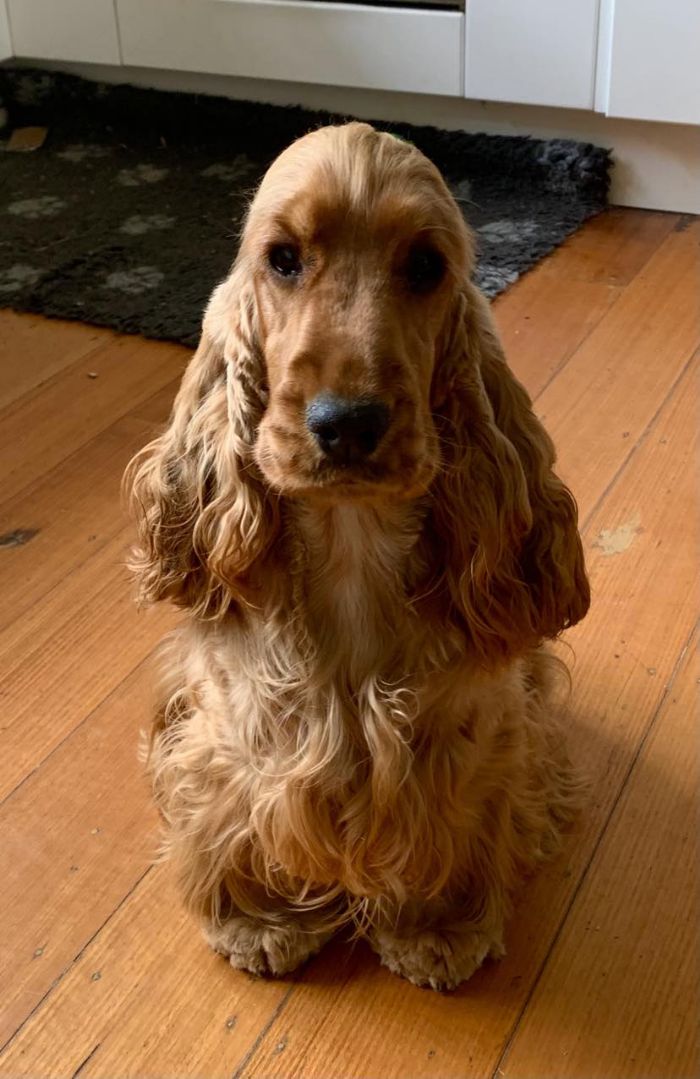BASIC TRAINING
Basic Training
Training is simply conditioning certain behaviours to occur either automatically (toileting, walking on a lead) or on command (tricks, recall). Modern training techniques use positive reinforcement, and it is proven far more effective than old school negative training techniques. Never physically punish a puppy. Even verbal reprimand can cause them great upset. Set them up for success, not failure.
Toilet Training
It is important to know that puppies do not have much bladder or bowel control until 10-12 weeks of age, and it will likely take them until 4-6 months to perfect this. It is a development very similar to that of human babies and toddlers. So be patient and smart. And stay positive. Puppies will usually go to the toilet upon waking, after drinking and eating, after playing, and generally at least once per hour. Look out for signs of sniffing the ground, circling, whining, wanting to leave the area. Don’t scold or punish the puppy if it has mishaps. They are practising and you missed the signs. Be super enthusiastic when they go to the toilet outside, though. Use the word “TOILET” and be generous with your praise and treats. You want the puppy to think “wow - I’ll try that again”! You might want to consider limiting the areas of the house the puppy has free, unsupervised access to during the toilet training period.
Teaching Its Name
Your puppy needs to learn its name as a positive thing, so they will always look at you when you say it. Positive conditioning is achieved by learning to associate the name with something positive. Like a treat. Sit with your puppy and as you say its name, give it the treat. Repeat this fairly frequently, and your puppy should soon know its name. The basis of this training, can lead you onto clicker training, and is similar to the foundation for all other sorts of training.
Learning Recall = COME!
Apart from being one of the most useful and common commands, effective recall can be crucial to your puppy’s safety. Be careful that you do not end up using your puppy’s name as a recall command, as this becomes very confusing for the dog. Their name is only used to get their attention, like dialling someone’s number. The command “COME” should follow their name so that they are already listening to you when you say it. “Fifi” (puppy looks at you) “COME” (puppy comes to you). Again, use very positive and reward-based training techniques. Never punish the puppy for coming. If you find a toileting mishap in the kitchen, and you call the puppy and punish it, you will undo all hard your work. Never reprimand a puppy that has successfully followed a command.
Sit
This is the most commonly taught trick and one which helps control unwanted behaviour such as jumping. Sit is the basis for further training.
Position your dog facing you with his rear close to a wall or fence as the dog cannot move backwards. Focus the dogs attention on the reward in your hand, by allowing the dog to smell or lick it.
With the dog concentrating on your hand, and the treat a couple of centimetres away from your dog, slowly move the food in a backwards motion close to the nose up and over the dog’s head towards the back of its neck.
Most dogs will rock backwards as they follow the treat in your hand with their head, and automatically sit. As they do this, say “SIT”. You can even give a gentle push on your dog’s rear to reinforce the sit. Reward instantly with the food and praise. Repeat the procedure at least a dozen times to reinforce the behaviour.
Eventually you can stand in front of your dog and command “Sit” and your dog will do just that but don’t forget to reward. Soon your dog will be coming to you and sitting perfectly straight in front of you.

Ellie
Stay
Food rewards should be hidden out of sight. Initially, have your dog on a training lead. The dog must be steady in either the sit or drop position, facing you.
Stand on the lead, take one step back and issue the command “Stay” and at the same time give the hand signal for “Stay” which is usually a downward motion of the hand held open palm towards the dog. Wait 5 seconds, and as long as the dog is steady, step forward again, praise and reward the dog. From then on it is simply a matter of lengthening the time and distance. Reward your dog and give lots of positive praise.
As training progresses, you can remove the lead and the distance. Eventually, you should be able to move out of sight for a short period of time and return and your dog should be in the same position.
Walking On A Lead
Your goal is to have your puppy eventually walk alongside you on a loose lead, and not pull ahead. Again, sessions should be short and rewarding. Teach that pulling gets you nowhere. If the puppy pulls forward or to the side, either stop or change direction. If the puppy pulls backwards, practice “COME”. As you walk along and the puppy does well, praise it and use the word you have chosen, like “HEEL”. You can also teach the word “STOP” or “HALT”. Just ensure that you keep it positive. If you feel yourself getting frustrated, quit, and try again later.
